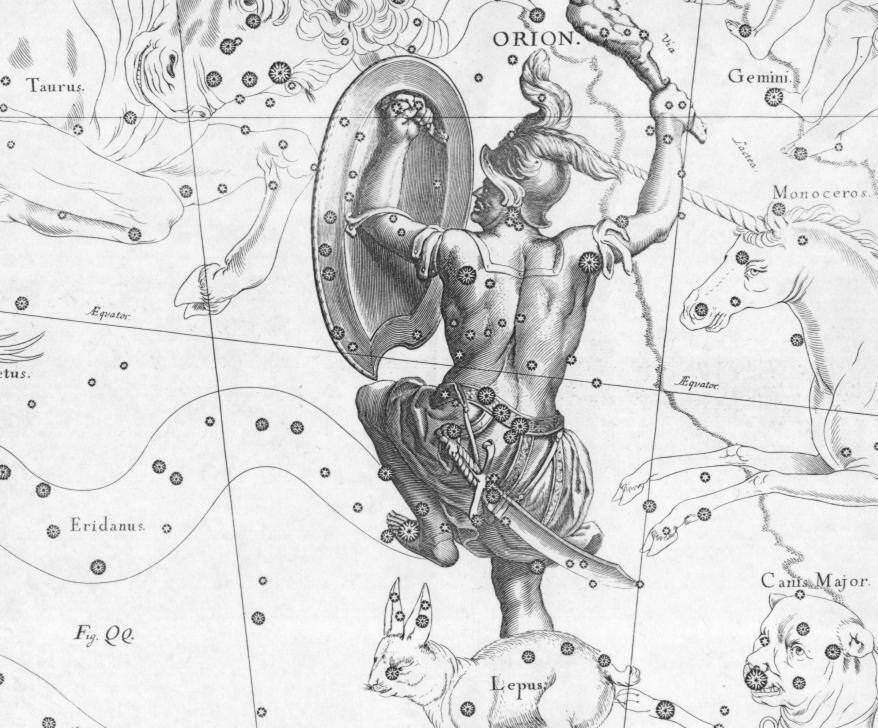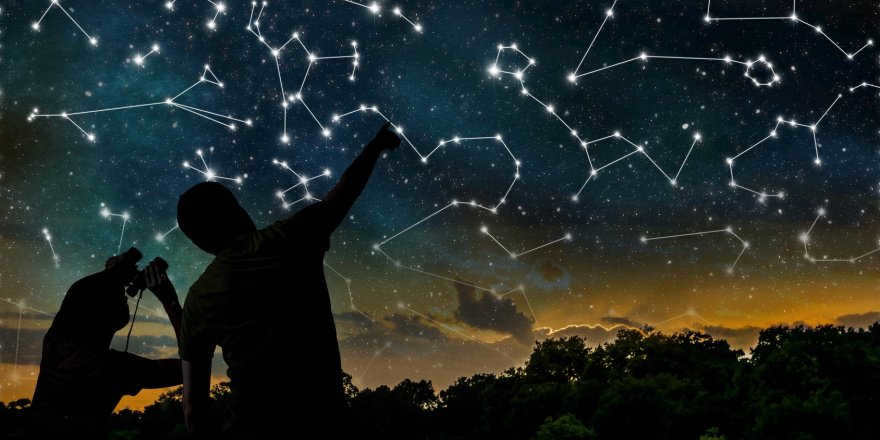
The night sky is filled with an array of peculiar creatures and even scientific instruments such as Phoenix, Hercules, Triangle, and Chameleon. But have you ever wondered who placed them there and how the constellations came into existence?
Let’s Travel Back to the Ancient Times
Ancient Greece is often regarded as the birthplace of civilization, and modern society owes a great deal to this ancient civilization. It is astonishing how they were able to answer many questions about the universe with limited knowledge.
Looking up at the sky, one can see a vast number of stars. However, amidst this chaos, there is actually an orderly arrangement. To facilitate navigation through the stars, they were grouped into constellations, which formed recognizable patterns resembling familiar creatures, deities, or mythological heroes.
Interestingly, these stars are often not physically close to each other or even on the same plane. However, from the perspective of Earth, they appear to be in close proximity.
The Almagest: Ptolemy’s Great Achievement

The Almagest star globe was authored by Ptolemy.
In the contemporary world, there exist 88 constellations. Their primary function is to aid in swiftly navigating the night sky using easily memorable shapes. The initial roster of 48 constellations emerged circa 140 AD. 140 A.D. This compilation is known as the “Almagest”, penned by mathematician, astronomer, and geographer Claudius Ptolemy.
Expanding the product range
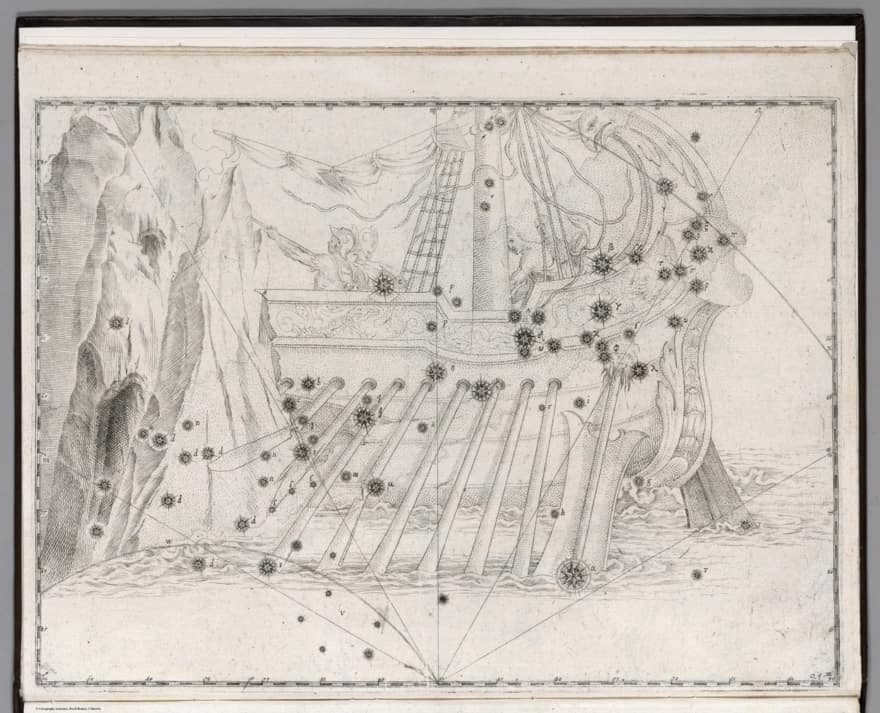
The constellation of the ship Argo was later split into multiple smaller constellations.
Therefore, the constellations mentioned in the Almagest served as a starting point. However, it was not Ptolemy who originated them, but rather he documented the ones already identified by Eudoxus Cnidus, an ancient Greek astronomer. Additionally, many constellations were influenced by Babylonian knowledge and observations.
As observers in one hemisphere could not see the stars in the other hemisphere, the catalog of constellations gradually expanded. For instance, in the 16th century, new southern constellations were introduced by Peter Keyser and Federico de Houtman, Dutch navigators.
There were 11 constellations that were captured by Johann Bayer in his Uranometria (1603), and an additional 13 were discovered by Nicola Louis de Lacaille. Certain important constellations were determined to be split. As a result, Sails, Keel, and Stern emerged from the Ship of Argo. The southern sky is home to 52 constellations, while the northern sky contains 36.
The year 1922 marked the point when the boundaries were established in 1922 and later in 1935.
Who is responsible for naming the constellations?
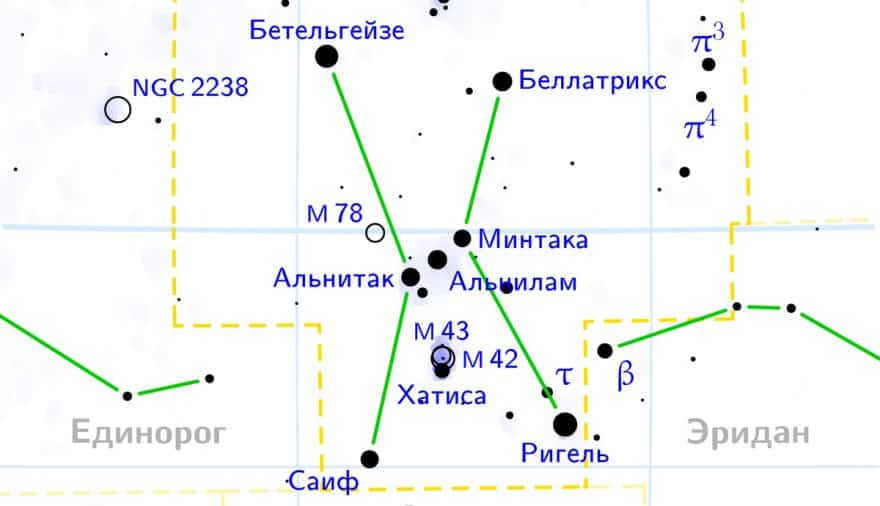
A depiction of the constellation Orion’s Belt is shown on the map.
All references to mythology derive from the ancient Greeks. This system of storytelling served as a valuable tool for memorization, as the narratives aided in navigating the night sky. By locating the asterism Orion’s Belt, one could readily discern the stars that comprise its constellation. Each hero was linked by a legend, providing a clear explanation for the proximity of the Little and Big Dipper.
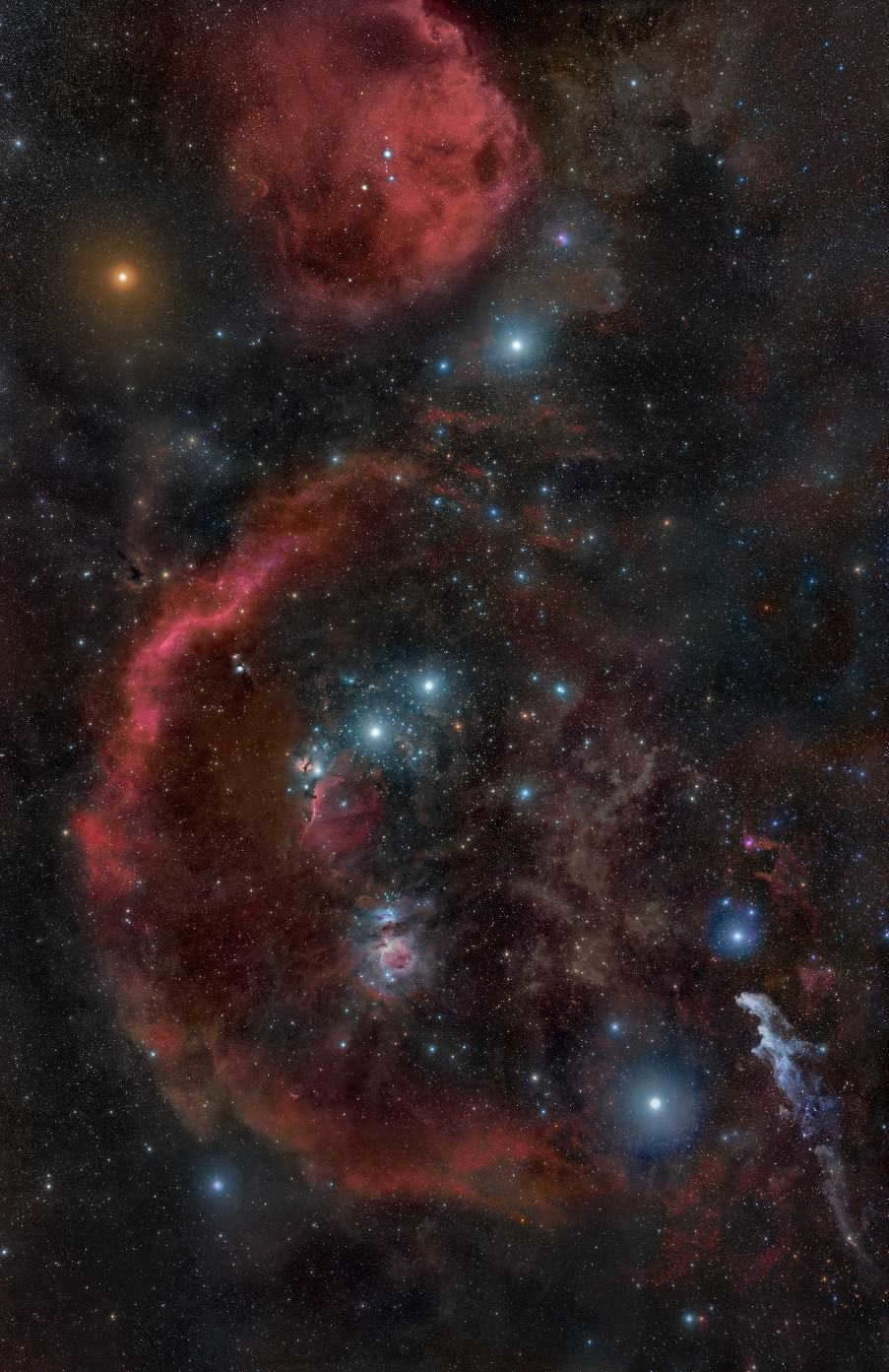

The stars in the constellation Orion were photographed in October 2010. Additionally, the Orion Molecular Cloud nebulae, the red supergiant Betelgeuse (located in the upper left), Rigel (situated in the lower right), and Barnard’s Loop (which has a red crescent shape) are also visible in this image.
There are 12 constellations of the zodiac that astronomers use to track the Sun’s path as it moves through the ecliptic over the course of the year. As time went on, more formal names began to be used. Formal names such as the Goldfish and the Indian were derived from Bayer’s star catalog, while Lacaille named his constellations after scientific instruments like the Pump and the Octant. The choice of name was based on either the shape of the star pattern or the personal preference of the scientist who made the discovery.
There exist asterisms that should not be mistaken for constellations. They are a specific collection of stars with a distinct form and a designated label. They can be found within multiple constellations simultaneously. For instance, the Big Dipper is a constellation, while it is also an asterism.
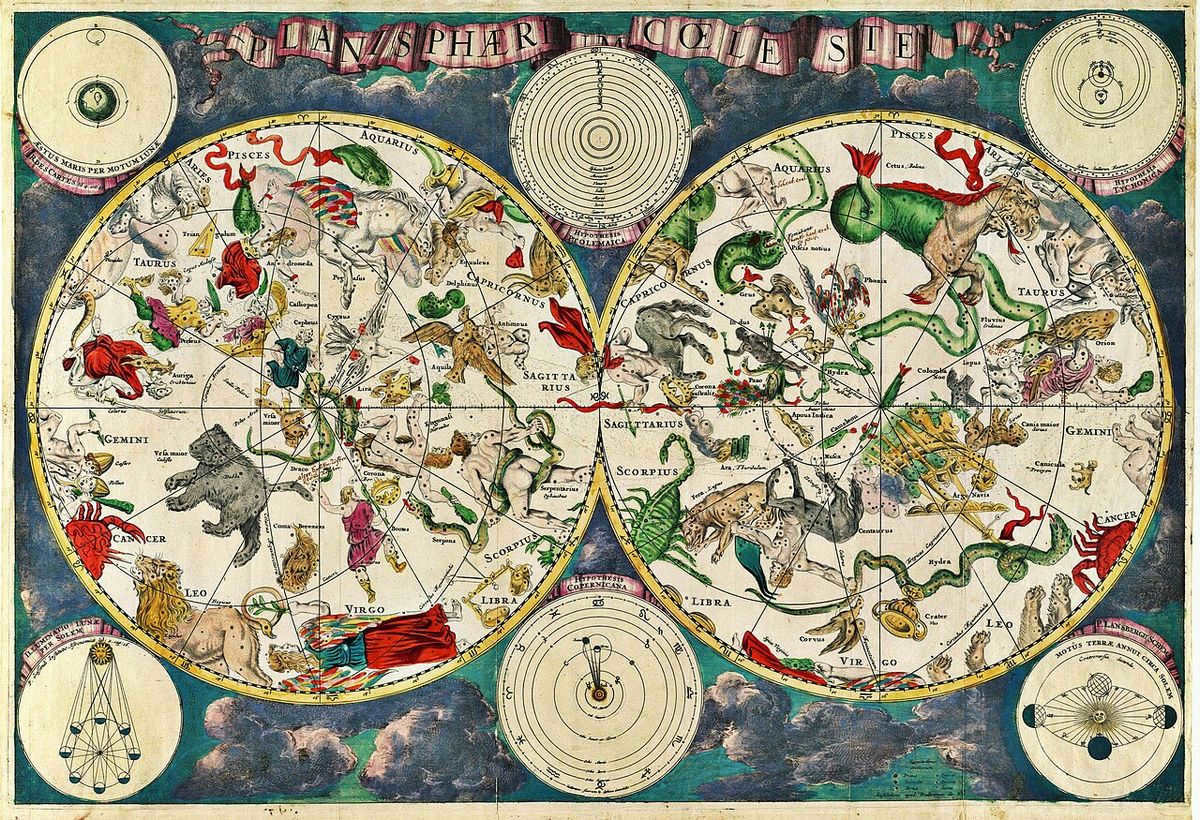
Astronomers have long been fascinated by the constellations, which are recognizable arrangements of stars that create imaginary outlines and patterns in the sky. Over the centuries, people from different cultures and civilizations have named these constellations, using them as guides for navigation and as a way to connect to the larger universe. These patterns have played a crucial role in the development of our understanding of the stars, inspiring awe and curiosity in those who gaze upon them.
Origins of constellations
The history of constellations can be traced back to ancient civilizations like the Egyptians, Babylonians, Greeks, and Chinese. These civilizations observed the stars and organized them into patterns based on their cultural, religious, and astronomical significance. The earliest constellations often had mythological and religious meaning, representing stories of gods, heroes, and creatures from various cultures.
One of the oldest known records of constellations comes from Mesopotamia, where clay tablets have been found dating back over 4,000 years. The ancient Egyptians also utilized constellations for religious and agricultural purposes, using their knowledge of star positions to predict events such as the annual flooding of the Nile River.
The Greeks, particularly in the Hellenistic era, played a crucial role in the advancement of constellations. Greek astronomers like Hipparchus and Ptolemy established an intricate network of celestial maps, which laid the groundwork for our contemporary comprehension of constellations. Ptolemy’s renowned masterpiece, the Almagest, encompassed a comprehensive list of 48 constellations, which endured as a significant reference for countless years.
Different cultures across the globe have their own unique constellations, each with their own interpretation and significance. For instance:
Greco-Roman constellations: Many constellations that are recognized in modern astronomy have their origins in Greco-Roman mythology. Examples of these include Orion, the Big Dipper, and Cassiopeia.
Chinese constellations: Chinese astronomers developed their own set of constellations, which emphasized celestial regions that were not covered by the Greco-Roman system. Chinese constellations are closely tied to Chinese mythology and astrology.
Indigenous constellations: Indigenous cultures around the world have rich traditions of observing and understanding the stars. The constellations of the Navajo, Maori, and Australian Aborigines, for instance, hold unique cultural significance.
Arab constellations: During the “Golden Age” of Islam, Arab astronomers played a crucial role in preserving and expanding the knowledge of constellations originally established by Greek and Indian astronomers.
Contemporary constellations
In 1922, the International Astronomical Union (IAU) defined 88 constellations with precise boundaries and assigned them official three-letter abbreviations, including popular ones like Ursa Major (UMa) and Orion (Ori). These 88 constellations serve as a universal reference system for astronomers and sky observers worldwide, covering the entire celestial sphere.
The role of contemporary constellations extends beyond folklore and fantasy. They serve as a vital navigation aid for astronomers, enabling them to pinpoint and recognize celestial entities like stars, galaxies, and nebulae. Astronomical coordinate systems, such as the equatorial and ecliptic, heavily rely on the stable placement of constellations to establish their whereabouts in the heavens.
Standardization of Constellation Naming and Recognition by IAU
The International Astronomical Union (IAU) takes on the responsibility of standardizing the naming and recognition of constellations and their individual stars. The procedure for naming a new constellation or star is typically associated with a significant astronomical discovery or event. Proposals to create new constellations or modify existing ones undergo a thorough review and approval process at the IAU.
Although modern scientific advancements have been made, many constellations still retain their historical names that originate from ancient mythology and cultural beliefs. These constellations serve as constant reminders of humanity’s enduring fascination with the cosmos and our everlasting connection to the celestial bodies.
Constellations have had a significant impact on human history, serving as a guide for navigation, a source of cultural identity, and a source of wonder about the universe. From ancient myths to modern astronomy, these arrangements of stars continue to ignite and captivate the human imagination, reminding us of our position in the vastness of the cosmos.
"When were constellations first given their names?"
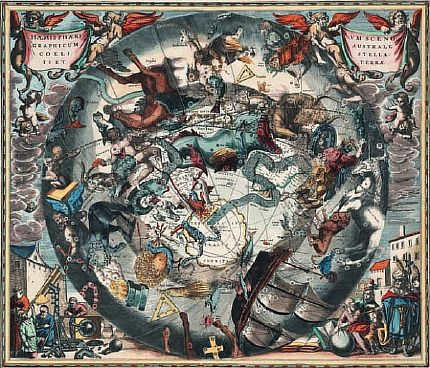
Clusters of stars that are referred to as constellations were the fundamental building blocks of the initial star maps that were crafted during the second millennium BC. Even at present, astronomers identify a total of 88 universally acknowledged constellations. It is worth noting that these constellations were named after mythical creatures, deities, and legendary figures by the astronomers of ancient Greece.
Who gave the constellations in the northern sky their names?
The constellations in the northern sky were originally named by various civilizations such as the Sumerians, Greeks, Egyptians, and Romans. These civilizations named the constellations after their gods and heroes. Some examples of these named constellations are Cassiopeia, King Cepheus, Andromeda, Perseus, and Hercules. However, when explorers ventured to the southern hemisphere, they discovered a completely different set of constellations. These explorers decided to create new constellations using the stars in the southern sky and gave them new names, often based on navigational instruments and ship equipment.
What is the zodiacal circle?
The zodiacal circle, also known as the circle of animals, originates from the Greek language. It is a concept that refers to the path of the Sun and Moon through constellations that are associated with both mythical and real animals. In ancient Greece, the zodiacal circle was divided into 12 parts, with each part named after a specific constellation – Aries, Taurus, Gemini, Cancer, Leo, Virgo, Libra, Scorpio, Sagittarius, Capricorn, Aquarius, and Pisces. Additionally, there is a 13th constellation called Serpentine, which is also part of the zodiacal circle, although astrologers choose to disregard it.
Astrologers believed that the positioning of planets and stars within the zodiacal constellations had an impact on people’s lives, despite there being no physical connection between them.
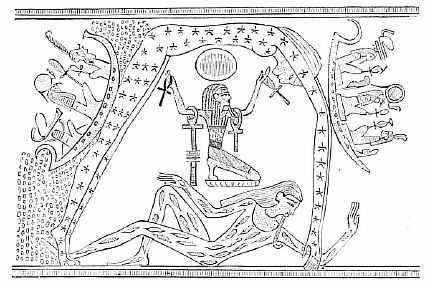
The first star chart, consisting of 28 illustrations of constellations, was compiled by Eudoxus of Cnidus, an ancient Greek scholar, in the 4th century BC. However, even before that, individual stars and constellations were depicted on the walls of Egyptian pharaohs’ tombs, clay tablets, and amulets.
Do constellations shift over time?
The celestial bodies in the vast universe are in constant motion, although their movements are imperceptible to the human eye due to the shortness of our lives and the great distances between us and the stars. Over an extensive period, the positions of the stars within constellations have changed. Ancient astronomers who meticulously documented these luminaries in their catalogs provided detailed descriptions of the stars’ locations within specific constellations. However, as time has passed, some of these stars have shifted to adjacent constellations.
A spacecraft is capable of capturing images of up to 1 million square kilometers of the Earth’s surface in just 10 minutes, whereas an airplane would require 4 years to cover the same area. Geographers and geologists, on the other hand, would need a minimum of 80 years to achieve the same feat.
© 2013-2022 Beginning to know the Universe

The history of constellation and star names has always fascinated people. Since ancient times, those who gazed at the night sky noticed clusters of stars that stood out. These groups were combined into constellations and were given various names. These names often came from mythical creatures, legendary heroes, and even concepts from the era of the Great Geographical Discoveries.
The shape of the Big Dipper bears a resemblance to a ladle, while the constellation of Taurus has a similar appearance to an amoeba. This has sparked the curiosity of many individuals regarding the origins of their names. The history of the development of these terms can be traced back to Ancient Greece, where numerous concepts were influenced by legends.
Presently, there are approximately 275 constellations that can be observed without the aid of telescopes. However, during ancient times, it was not customary to assign names to individual stars. As a result, early sky maps and depictions only featured the names of the constellations, while the stars themselves were simply denoted as bright points.
Constellations encompass all the stars within a specific region of the sky. Myths surrounding their names continue to captivate people to this day, leaving the line between truth and fiction blurred.
Big Bear and Little Bear
Legends of the Big and Little Bears abound. According to one tale, there was once a ruler named King Lycaon who governed the land of Arcadia. Within his realm resided a daughter named Callisto, possessed of a beauty that seemed to transcend the mortal realm. Callisto dared to challenge the very wife of Zeus, the mighty Hera. In her jealousy, the goddess exacted her revenge by transforming Callisto into a hideous bear.
Upon returning from a hunting expedition, Callisto’s son Arcades discovered a wild beast lurking near his home. In his fear and confusion, he nearly struck down his own mother. Yet, Zeus intervened, staying the young man’s hand and carrying Callisto up to the heavens. There, he transformed her into a brilliant constellation known as the Big Dipper. In a final act of mercy, Zeus transformed Callisto’s loyal dog into the Little Dipper.
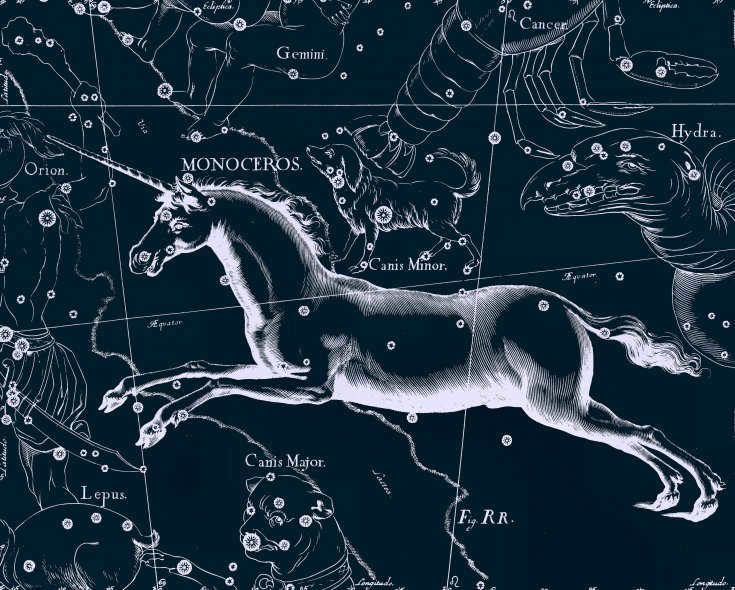
Arcadus did not remain on the planet either. Zeus created the constellation Volopas out of him, who was tasked with protecting his mother for eternity. The primary star was given the name Arcturus, which means “guardian of the Bear”. The Big Dipper and Little Dipper are constellations that can be seen most prominently in the northern sky, even when the sun has set.
Cassiopeia
The constellation known as Cassiopeia is widely regarded as one of the most stunning and enigmatic constellations in the night sky. However, the origins of its name are not widely known. Cassiopeia was the wife of King Cepheus of Ethiopia, and together they had a daughter. As the years passed, it became increasingly apparent that their daughter possessed an extraordinary beauty. One day, while strolling along the shores of the sea, Cassiopeia decided to introduce her daughter to the Nereids.
The Nereids were so captivated by the girl’s otherworldly beauty that they couldn’t help but inform Zeus. Enraged by Cassiopeia’s prideful actions, the god decided to unleash a monstrous creature upon the land, one that would devour everything in its path. It is impossible to say how long this terrifying reign of terror would have endured if Cepheus had not been able to beseech Zeus for forgiveness, offering his beloved daughter Andromeda as a sacrificial offering.
Derived from ancient Greek, the name Cassiopeia can be translated as “eloquent” or “superior”. Similarly, Andromeda means “ruler of men”. The origin of the name Cepheus is still unknown, while Perseus is derived from the country of Persia.
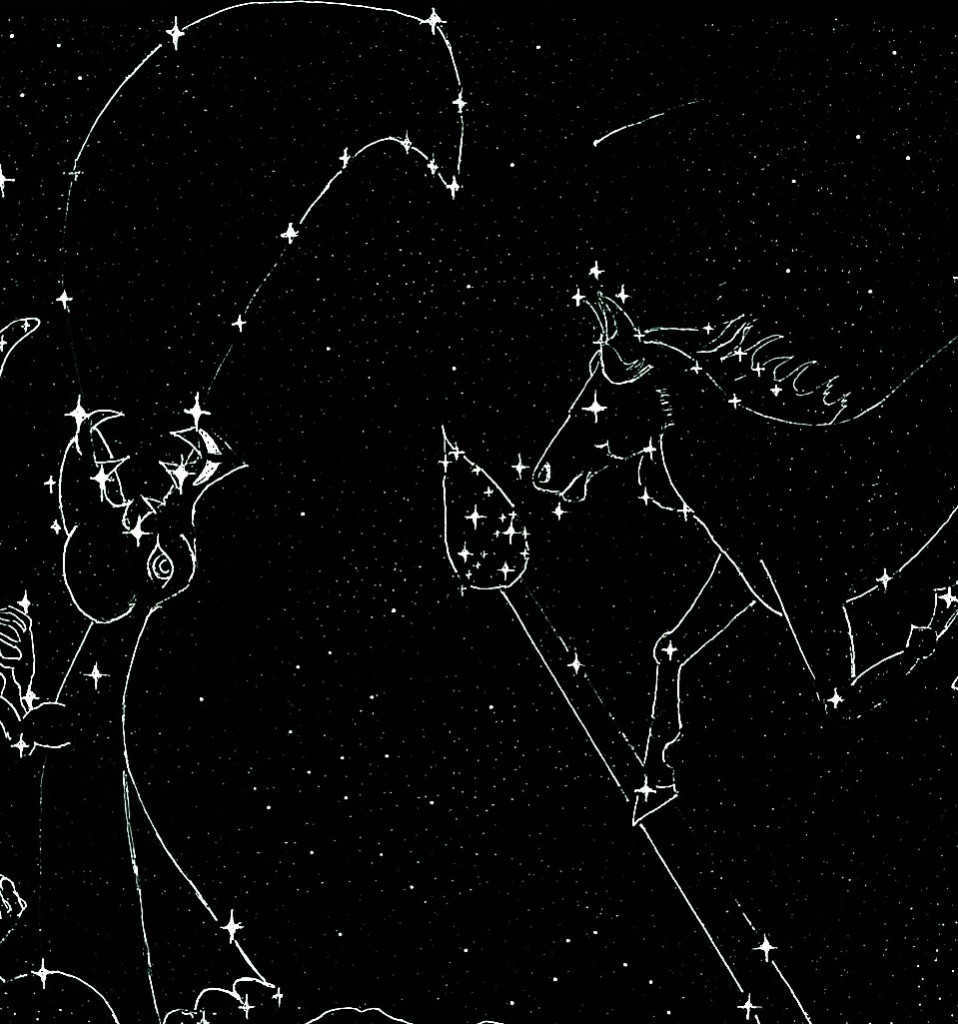
Orion
This constellation is often referred to as the “belt” and is renowned for its exquisite beauty. Its name is derived from the legendary hunter Orion. In Ancient Egypt, it was known as Sah and was believed to be the manifestation of Osiris, the celestial “king of the stars”.
According to ancient Greek mythology, this cluster of celestial stars represents Orion, who was the son of Poseidon. After his tragic death at the hands of Artemis, his father elevated him to the heavens, granting him eternal life.
Constellations of the Zodiac signs
In ancient times, constellations were often likened to animals or figures, and some of the names have survived to this day. However, the most fascinating legends revolve around three particular constellations. For instance, Virgo derived its name from a mythical creature with the head of a woman and the body of a lion. According to some cultures, Virgo was believed to be the daughter of Themis, the goddess of balance.
The constellation of Leo, on the other hand, has a much richer history. Over 4,500 years ago, this constellation marked the position of the summer solstice, the hottest time of the year. It is for this reason that Leo is often referred to as a fire sign.
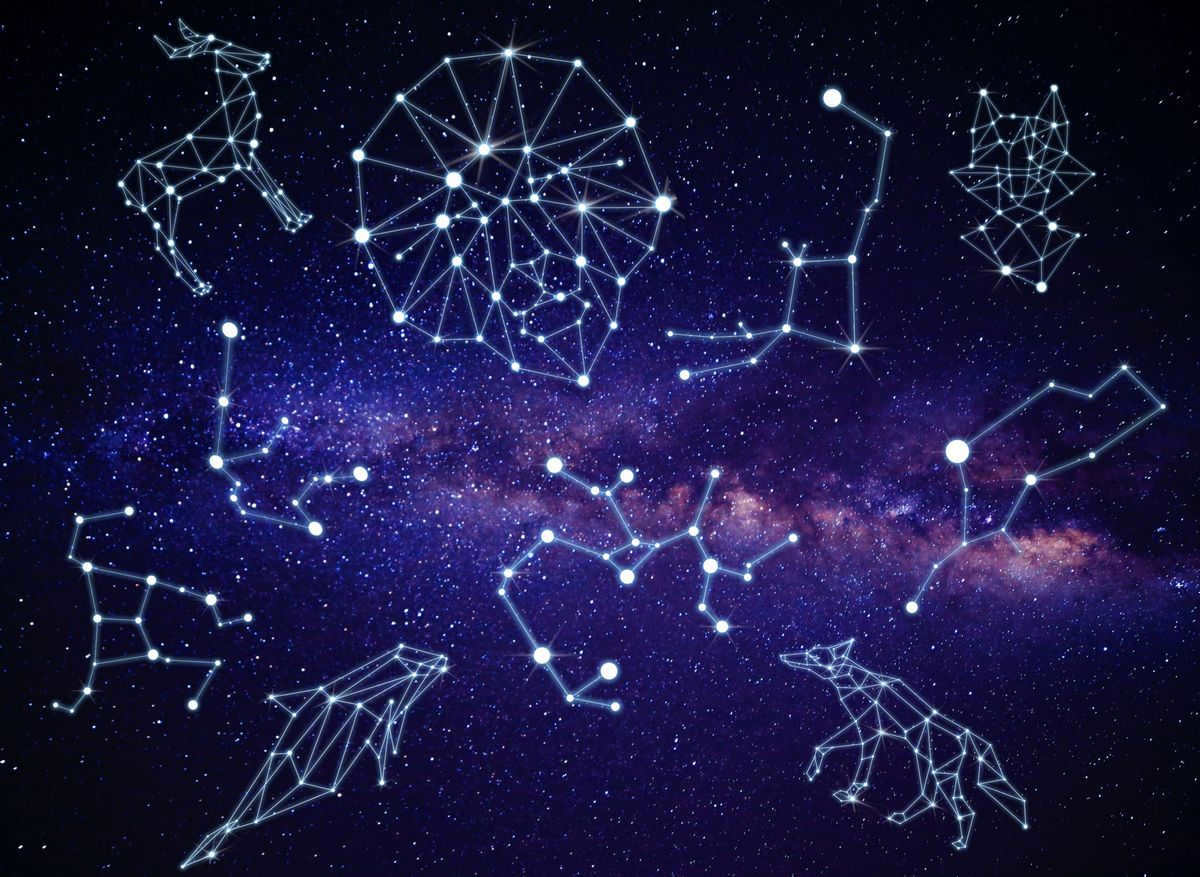
Not all celestial objects are named after Greek myths. For instance, the constellation of Pisces has ties to Phoenician legends. In ancient times, people believed that a goddess of fertility was depicted as a woman with a fish tail. The presence of the tail symbolized her fear of a sea monster, which led her to throw herself and her child into the water. However, thanks to the tail, she was able to survive and save her son. According to ancient Greek mythology, the goddess of love Aphrodite transformed into a fish at the end of her life, and Zeus elevated her to the heavens.
Legends of constellations are fascinating and unusual, with each name having its own unique meaning and rich history. Some constellations were named after characters from myths, while others were named based on their appearance. However, not all the concepts have survived to this day, and more modern names were given due to a lack of information about them in the past.
Constellations are groups of stars that are commonly associated with specific names. This is how the field of astronomy defines them. While they appear to have a fixed position in the night sky, they are not necessarily connected locally in the vastness of space. In ancient civilizations, people decided to connect the stars with imaginary lines, creating virtual silhouettes on the celestial sphere.
Europeans honored the constellations named by the peoples inhabiting the southern regions, which were previously unknown to them. This occurred during later explorations of these areas. The constellations were already named by the southern inhabitants based on their beliefs. Constellations are traditionally divided into two groups based on their location in the celestial hemisphere:
The two groups are the northern constellations, which are located north of the celestial equator, and the southern constellations, which are further south. However, in 1928, the International Astronomical Union (IAU) made the official decision to regroup the celestial sphere into 88 constellations with defined boundaries, ensuring that every point in the sky falls within a specific figure.
Constellations throughout History
In the past, Dr. Minor discovered several constellations, but they have since been forgotten. Some of these constellations have been completely lost to time due to a lack of historical documentation. As a result, it is challenging to determine the exact origins of the oldest constellations in the Western world.
Scientists have conducted research and identified Leo (the lion), Taurus (the bull), and Scorpio (the scorpion) as constellations that have been present since ancient times. These constellations date back to around 4,000 years before the Christian era, during the Mesopotamian culture. However, it is important to note that they may not have been known by these names at the time.
It is not precisely known what sparked the interest of ancient people in the Constellations. However, it is believed that their fascination with the arrangement of the stars had practical purposes at its core. Unlike today, it was driven more by a sense of exploration and a desire to understand the universe. Many of these civilizations were primarily focused on agriculture, but they also had ambitions related to trade and religion.
Their study of the Constellations served multiple purposes. It helped them measure time and seasons, and it also acted as a reliable guide for sailors and merchants during nighttime journeys by sea or through deserts. By associating groups of stars with imaginative figures (and crafting legends and stories around them, as seen in mythology and astrology), it became easier and safer for these ancient people to memorize the routes they needed to follow.
Ancient Constellations
The International Astronomical Union has officially recognized 88 constellations, and interestingly, nearly half of them were created by the ancient Greek astronomers. One of these constellations, Orion, is mentioned in the famous literary work The Odyssey, written by Homer in the 9th century BC. However, it is worth noting that in ancient Egypt, this constellation was known as Sahu, a thousand years prior.
On the other hand, the concept of the Zodiac, which consists of twelve constellations, originated in Babylon. This discovery was made during the reign of Nebuchadnezzar II in the 6th century BC. The Zodiac was closely tied to the twelve lunar months of the year. Eventually, it was adopted by the Greek culture, and the constellations were given their current names.
An extensive compilation of the earliest constellations can be traced back to Claudio Ptolomeo, who, in the second century A.D., presented a catalog of 1,022 stars. These stars were organized into 48 constellations as part of his work, Almagesto. This influential work was originally written in Greek as Ἡ μεγάλη Σύνταξις (Syntax He Megále: “the great treatise”) and served as the foundation for many subsequent Western astronomical compilations.
During the Middle Ages, only the stars visible from Alexandria, where Ptolemy conducted his observations, were considered.
These star groupings are the most ancient ones in existence on Earth. They differ greatly from the contemporary constellations officially recognized by the IAU. The reason for this is that the IAU’s classification system is rooted in Greek astronomy. This is primarily due to the fact that Chinese astronomy developed independently, albeit concurrently with Greek astronomy.
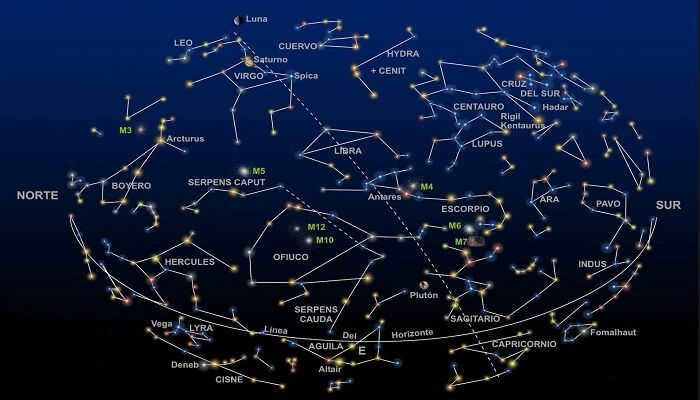
Chinese astronomers divided the sky into 31 regions called three enclosures (三垣 sān yuán) and twenty-eight mansions (二十八宿 ershíbā xiù). These three enclosures cover an area near the north pole, making them visible throughout the year in high latitudes. The twenty-eight mansions, on the other hand, occupy the zodiac area and can be considered equivalent to the twelve zodiacal constellations.
In contrast to Western astronomy, the twenty-eight mansions do not represent the apparent motion of the Sun but rather the motion of the Moon during its month-long journey around the Earth. The three enclosures and twenty-eight mansions are further divided into 283 asterisms. Each star corresponds to one of these asterisms, and some asterisms consist of only one star.
Ancient China lacked knowledge about the appearance of the sky surrounding the South Celestial Pole, resulting in their exclusion from the three plots and 28 mansions. However, during the Ming dynasty’s final years, Xu Guangqi introduced an additional 23 asterisms based on the star charts of the Western world.
Hindu Culture
In Hindu astronomy, constellations are named differently, referred to as nakshatras (नक्षत्र) or the moon mansion. Each of these nakshatras represents a specific section of the sky, identified by the brightest stars within them, that the Moon traverses during its monthly cycle. Consequently, each nakshatra represents a portion of the ecliptic similar to a segment of the Western zodiac.
Where do the nakshatras originate? The answer to this query is that they stem from a specific point on the ecliptic that is directly opposite a star known as Chitra. This star is often associated with the beginning of Aries. However, the ecliptic itself divides into each of the nakshatras to the east of this point.
Keeping this in mind, I am currently compiling a well-organized roster of nakshatras in Hindu astronomy. This comprehensive list can be found in the Vedic texts as well as the Shatapatha Brahmana. The first astronomical text that includes these nakshatras is the Vedanga Jyotisha Lagadhi. In Hindu mythology, the nakshatras were created by Daksha and are represented by the daughters of this deity, who are also the wives of Chandra, the moon god.
Each of the nakshatras is governed by one of the nine celestial bodies known as grahas in the following order: Ketu (Lunar South Node), Shukra (Venus), Ravi or Surya (Sun), Chandra (Moon), Mangala (Mars), Rahu (Lunar North Node), Guru or Brijaspati (Jupiter), Shani (Saturn), and Budha (Mercury). This sequence is repeated three times until all 27 nakshatras are encompassed.
Within the realm of this culture’s astronomy, there existed merely two categories of constellations. These constellations could be classified as either stellar or brilliant, or alternatively, as constellations formed through the aggregation of dust and interstellar gas. The former, referred to as Stellar or Bright Constellations, comprised individual stars of exceptional luminosity.
These constellations, which were observed by the Inca astronomers, constituted constellations in their own right. Additionally, they combined with others to form interconnected patterns in the night sky, stretching from east to west. Conversely, the second type of Inca constellations were characterized by the Condensation of interstellar gas and dust, resulting in dark spots occupying regions within the Milky Way.
The aforementioned constellations of the Dark or black variety make up a distinct group. Inca astronomers conducted a study that resulted in the discovery of several dark regions within the Milky Way. These regions were found to resemble animals and were consequently associated with the rainy season. As a result, they became known as “dark constellations”.
Researchers in Cuzco have uncovered numerous documents left by Spanish colonizers. It was these colonizers who provided descriptions of the Temple of the Sun. It is said that this sacred site emitted forty-one axes known as ceques. These axes were believed to have geomantic or astronomical significance, indicating specific locations within the valley. In total, the valley contained 328 huacas, which served both ritual and political purposes.
Research on the Incas
The findings regarding the Incas demonstrate their understanding of the synodic movement of the planets. Furthermore, it suggests that the Incas developed a religiously-focused Moon Calendar and an agricultural solar calendar. To achieve this, the Incas employed techniques such as the creation of mounds surrounding their cities for observational astronomy.
The calendar formulated by the Incas was comprised of a 365-day solar year. This was divided into 12 months, each consisting of 30 days, with an additional 5 intermediary days. It is known that the determination of this calendar relied on the observation of the sun and moon. However, in order to establish precise dates for the year and month, Pachacutec commissioned the construction of 12 towers or columns situated to the east of the llacta of Cuzco, known as sucangas.
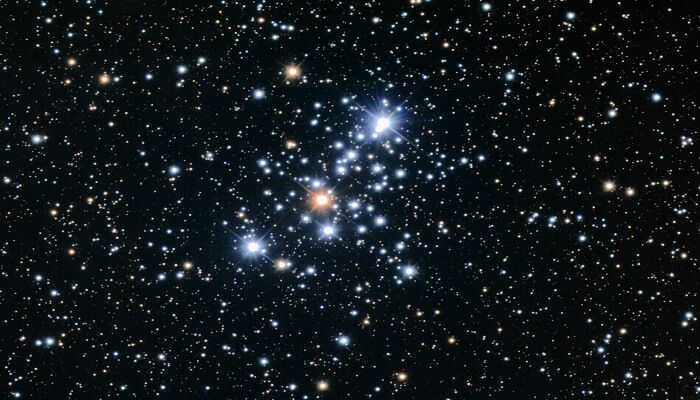
The Incas placed great significance on constellations. They had a keen interest in timekeeping, particularly for agricultural reasons. The Incas had their unique set of constellations, and they believed that the Milky Way was covered by bags of coal. Astronomy, in fact, played a crucial role in the design and construction of their cities.
During the initial period of Inca constellations, it is worth mentioning the following in the correct order: the Western name, followed by the Quechua name, and finally the Spanish translation:
- Sirius = Fork of the Vara (Sacred Star).
- Canopus = Colla Vara (Star of Collas).
- Ahernar = Cancha Vara (Bright Star) or Catachilay (there are two interpretations).
- Antares = Choqechinchay (golden cat).
- Aldebaran = Chuchu Coyllur (Star going forward or toward the center) or Chukchu Coyllur (Star of Malaria or Tertian).
- Scattered cluster M7 = Saramama (Mother Corn) or Saramanka (Pot of Corn).
- Open cluster M45, Pleiades = Qollqa (warehouse, field) or Qoto (pile).
- The scattered cluster of the Las Giades = Qollqa.
- Lyra = small silver flame or Urkuchillai.
- The constellation Scorpio can also be called Chokechinchai or Amaru (Sacred Serpent) with two different interpretations.
- The constellation Orion can also be referred to as Hatun Chakana (Great Chakana) or Llaka Unancha – Llakachuki with two different interpretations.
- The Southern Cross constellation is known as Huchui Chakana (Little Chakana).
- The constellation Pegasus is named Thunawa, which means “Batan for chopping”.
- The Scorpion’s Tail is called Kollka.
- The Center of the Galaxy can be referred to as Kukamama or Kukamanka, which means “mother coca” or “pot of coca”.
- The Tail of the Big Dipper is known as Yakumama, which means “Giant Snake of the Jungle”.
Obscure or ebony constellations
On the flip side, within the Obscure or Ebony Constellations, we can mention the following in the appropriate sequence, along with the name of the kocha and its Spanish translation:
- Yakana or Catachilay = Stellar Blaze.
- Unya Lama or Huchui Lama = Offspring of the Lama.
- Atok = Vixen.
- Michik = Shepherd.
- Kuntur = Andean Condor.
- Llutu = Partridge (some sources suggest there are two).
- Hanp’atu = amphibian resembling a toad.
- Mach’aqway = Serpent (distinct from Amaru).
- Ukumari = Ambiguous Bear.
- Taruka or Lluych’u = Deer (positioned vaguely).
- Puma (ambiguous).
- Urk’uchillay = Black flame (male).
southern constellations
Between 1877 and 1879, the Argentine National Observatory (now known as the Astronomical Observatory of Cordoba) published an atlas and catalog of the renowned Argentine uranometry. This atlas includes the positions and brightness of all naked-eye-visible stars between the South Pole and a declination of -10°.
During the development of this catalog, the stellar designations and boundaries of the constellations were systematized and organized. Only the boundaries that were unambiguously defined and included in the atlas were considered. Dr. Benjamin A. Gould, the director of the observatory in Argentina, consulted with various astronomers and conducted a thorough analysis.
A comparison has been made between the limits of the constellation by Bayer, Nicolas Louis de Lacaille, and John Herschel. However, special attention has been given to the suggestions put forth by the latter astronomer. After an extensive and detailed study, it has been conclusively determined that the issue of the constellation names and their boundaries is resolved in the following manner:
The constellations proposed by Ptolemy and Johannes Hevelius remain unchanged. Additionally, the 14 constellations introduced by Nicolas Louis de Lacaille during his astronomical expedition to the Cape of Good Hope in 1751-1752 are also preserved. On the other hand, the massive and well-known argot constellation is definitively divided into three separate constellations: Carina, Puppis, and Vela.
The origin of the names of the constellations in the southern hemisphere
It has been established that the names of the constellations in the southern hemisphere are consistently used in their Latin form. Furthermore, a specific name is chosen based on a set criterion once it is officially adopted. Currently, there are only three instances where constellations have two names, but this is necessary in order to differentiate them from their counterparts in the northern hemisphere with the same name. Additionally, there is a constellation called Big Dog that has two names in order to distinguish it from the constellation known as Little Dog.
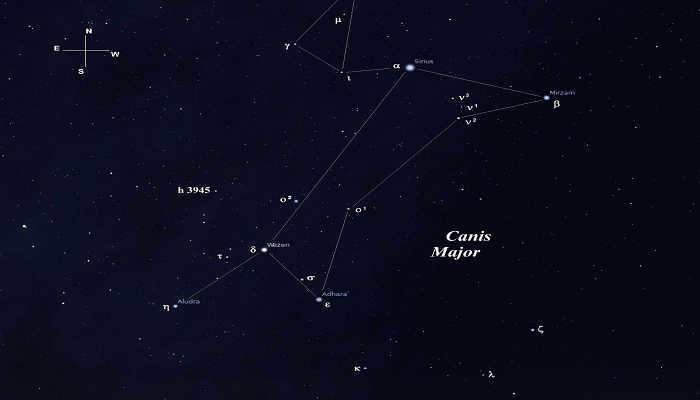
The denominations of the southern constellations serve another purpose as well, which is to establish fixed boundaries. This is achieved by tracing the meridians of direct ascent and the parallels of declination. In cases where this method couldn’t be applied, alternative curves that closely resemble great circles were approximated. Furthermore, the coordinates used in this catalog are based on the equinoxes from 1875.
There are several other groups of stars that have had a brief and fleeting existence, earning them the title of the “forgotten constellations”. Many of these constellations are no longer recognized by modern astronomers. However, they did exist, much like the aforementioned constellations, which were proposed primarily in the 19th century and never gained the approval of the scientific community.
One notable example is the constellation Antinoeus, also known as the Antinoeus constellation. It is likely that this is the only ancient constellation that has fallen into obscurity. Antinoeus was a young Greek man who was highly favored by Emperor Hadrian.
The stars that make up this constellation represent a small cluster located to the south of Aquila. They are associated with the Eagles. It is believed that Hadrian, after the death of the mentioned teenager, established this constellation in 132. According to historical records, it is said to honor dtfu, who gave up his life to protect the emperor.
There are various other constellations that have been lost over time.
One such example is Apis, which was originally depicted as a bee in 1603 but later became Musca Australis, the constellation we now know as Musca.
Another lost constellation is Minor Cancer, which was shaped like a crab and was recognized in 1613.
Cerberus, also known as the constellation of the dog guarding the gates of hell, is another constellation that has been lost.
One lesser-known lost constellation is Custos Messium, which was believed to be the guardian of the harvest and was identified in 1775.
Frederici cum laude, or the Glory of Frederick, King of Prussia, is another lost constellation that was named in 1787.
Globus Aerostaticus, which represented a balloon, is a constellation that was lost in 1798.
Lochium Funis was a constellation created by Johann Ehlert Bode using some stars from the Piccidae, although it was only recognized by him.
Machina Electrica, also known as the electric machine or generator of electricity, was a constellation that existed in 1800.
Malus represented the mast of the Argos ship and is another lost constellation.
Mons Maenalus, also known as Mt., is a lost constellation that had its own significance.
Musca Borealis, also known as the northern fly, is a lost constellation that had its own place in the skies.
Noctua, which represented an owl and was associated with the same asterism as Turdus Solitarius, is another lost constellation.
Officina Typographica, a printing press from the 18th century.
Phoenicopterus, a flamingo from 1787.
Polophylax, the guardian of the pole from the 17th century.
Psalterius Georgius, the harp of King George III from 1781.
Quadrans Muralis, the Quadrans from 1795.
Ramus Pomifer, a branch of an apple tree.
Robur Carolinum, the Charles Oak from 1679.
Sceptrum Brandenburgicum, the Brandenburg sceptre from 1688.
Sceptrum et Manus Iustitiae, literally the sceptre and the hand of justice from 1679.
Tarandus vel Rangifer, a stag or deer from 1736.
Taurus Poniatowii, the bull of Poniatowski, king of Poland from 1777.
Telescopium Herschelii, Herschel’s telescope.
Turdus Solitarius, the solitary thrush (or blackbird) from 1776.
Triangulum Minor, a small triangle.
Present constellations
The majority of constellation borders conform to the imaginary lines set by the International Astronomical Union between 1928 and 1930. These boundaries are based on the declination and right ascension lines as a reference for the year 1875. As a result, diagonal lines are not present. However, the movement of the earth’s axis in relation to the stars, known as precession, has caused changes since then.
Within these boundaries, they have shifted, but the size of each sign has stayed constant. According to these conditions, the Southern Cross is the most compact constellation in the sky: it only covers 68 square degrees, which is equivalent to just 1/600th of the entire sky. The largest constellation, Hydra, spans an area of 1300 square degrees, accounting for 3% of the entire sky. Moreover, the three largest constellations occupy 10% of the sky, the same proportion as the 27 smallest constellations.
Over time, the significance of constellations has diminished considerably. Nowadays, professional astronomers identify celestial objects based on their coordinates in the celestial sphere, utilizing a coordinate system. In general, constellations are primarily recognized and studied by amateur astronomers.
Identifying or observing the stars that form their shapes is the correct way to identify constellations. This is why it is important for people living in cities or areas near borders to see very few constellations, as the visibility of the faintest stars is negatively affected by light pollution. Light pollution occurs when excessive artificial light is released into the environment.
To properly observe constellations, it is recommended to find a dark location. It is crucial, above all, to begin with the first thing we have seen and learned in our lives in order to internalize them accurately. From there, we can explore the surrounding constellations as long as we have a map of the night sky or a guide for naked-eye observation.
To identify the drawings on paper in the celestial sphere, we require a naked eye landmark. You can easily purchase one at any bookstore. Once you locate a constellation in the night sky, the rest of the constellations will become visible automatically. The initial step is the most challenging, as you need to find someone who is familiar with at least one landmark. Once you have that, it will be sufficient to get started on the map.
In ancient times, only a few bright stars were given specific names (some were even considered constellations themselves). Subsequently, the Arabs, with their dedication to astronomical observations, bestowed names upon many other stars. The majority of these names correspond to the position of each star within its respective constellation.
Examples of different constellations
The star Aldebaran, which represents the most brilliant star in the Taurus constellation, is derived from the Arabic term al-Dabaran (الدبران), which means “the one who follows” (referring to the Pleiades). Another star in the same constellation is known as Alnat (or Elnat), which comes from the Arabic term an-Nat (النطح), meaning “tip of the horn”. In addition to the traditional names of stars that have Greek, Latin, or Arabic origins, stars are also assigned a name consisting of a lowercase letter of the Greek alphabet.
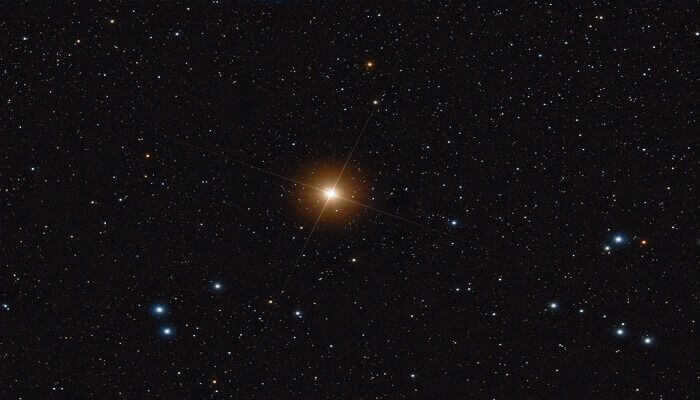
After establishing the order of decreasing apparent magnitude, the system for naming stars in constellations was initiated by Johann Bayer in the early 17th century. Subsequently, John Flamsteed assigned Arabic numerals to identify stars within each constellation. In both systems, the letters or numerals are followed by the Latin genitive case of the constellation name.
Similarly, Aldebaran and Alnath are also referred to as Alpha (α) and Beta (β) of Taurus in the Bayer system, or 87 and 112 of Taurus in the Flamsteed system, respectively. These stars may also have alternative names based on the various catalogs they are included in. Therefore, a single star can have multiple names.

